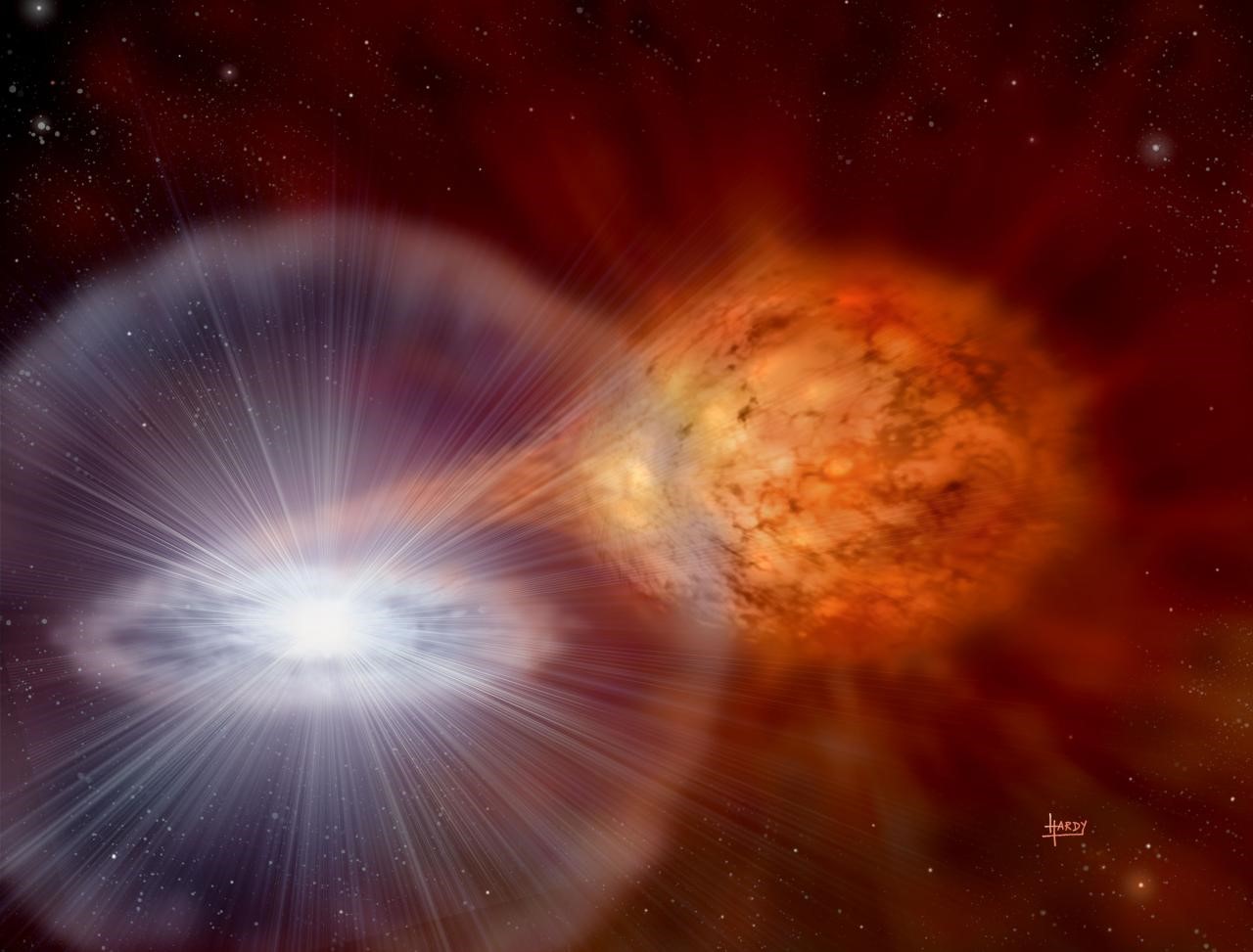NOVA

Disclaimer: Copyright infringement not intended.
Context
- Astronomers from the Liverpool John Moores University have performed photometric and spectroscopic observations of a recently discovered nova, known as AT 2023prq.
Details
- Novae, plural for nova, are astronomical phenomena that occur in the cosmos, characterized by sudden, transient brightening in the night sky.
Understanding Novae
- Nature of Novae: Novae are astronomical phenomena caused by the sudden eruption of nuclear reactions on the surface of a white dwarf star in a binary star system.
- Binary Star System: A nova occurs in a system consisting of two stars – a white dwarf and a companion star (often a red giant) – where material from the companion star is accreted onto the surface of the white dwarf.
Mechanism of a Nova
- Accretion Process: As material accumulates on the surface of the white dwarf, it undergoes immense pressure and temperature until a critical point is reached, triggering a runaway nuclear fusion reaction.
- Thermonuclear Explosion: This reaction causes a sudden burst of energy, leading to a rapid increase in brightness visible from Earth, often outshining the white dwarf's typical luminosity.
Characteristics and Observation
- Sudden Brightening: Novae can brighten by hundreds to thousands of times their usual luminosity within a short period, making them visible to the naked eye.
- Transient Nature: While novae brighten suddenly, their luminosity decreases over time, eventually fading back to their pre-outburst state or even below, returning to their usual brightness level.
Types of Novae
- Classical Novae: These are the most common novae and occur periodically when the accreted material on the white dwarf's surface reaches a critical mass triggering the explosion.
- Recurrent Novae: These novae experience multiple eruptions separated by longer intervals, suggesting periodic outbursts, and are characterized by a higher frequency of eruptions compared to classical novae.
Scientific Significance
- Stellar Evolution Studies: Novae provide valuable insights into the late stages of stellar evolution, especially regarding the behavior of white dwarfs and the accretion process in binary star systems.
- Nucleosynthesis and Element Production: The nuclear reactions during a nova event contribute to the production and dispersion of heavy elements, enriching interstellar space with elements like carbon and nitrogen.
Conclusion
Novae, spectacular celestial events resulting from the interaction of binary star systems, offer astronomers a window into the fascinating realm of stellar evolution and nucleosynthesis. These transient phenomena provide crucial insights into the dynamics of binary star systems and the cosmic processes shaping our universe.
|
PRACTICE QUESTION Q. Discuss the scientific significance of novae in understanding stellar evolution and their contribution to enriching interstellar space. (250 Words) |





1.png)
